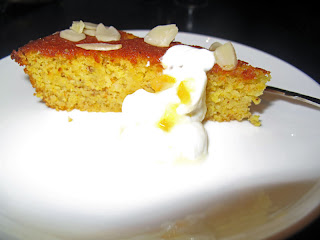Wholewheat Sourdough
Ingredients (by weight):
210g white sourdough starter 100% hydration
100g Strong Bread Flour
10g natural honey (no additives)
8.2g fine salt
180g water
Method:
Get a bowl or container that will hold more than double the volume of the dough mix.
I made a big ceramic bread bowl to mix my bread in which works well.
Mix all ingredients except the salt and turn out onto a floured bench.
Stretch and Fold or Knead for 5 minutes to bring the dough together.
Stretch and fold or knead for 10 minutes.
Note: there appears to be different theories around kneading for bread making, and this has to do with the science of gluten formation. There is an interesting experiment on white sourdough here. I say test out different methods and see what works for you. Bread is a personal thing I think! I like to knead my bread a little, at least to make sure all ingredients are incorporated (eg. seeds, fruit), and it is also really relaxing for me. The higher hydration doughs, such as Ciabatta, are better treated with the stretch and fold technique, and that works well and doesnt allow too much extra flour to be incorporated.
Once the dough is proved, a window can be seen through the dough when gently stretched.
Separate the dough into three portions.
For each portion, press out to a rectangle, fold 1/3 towards the centre and the other third over the top.
Turn the dough so the seam faces you and take the top two corners and fold IN and DOWN towards you.
Then, fold the round part down in the same direction.
Take the whole rounded top part and roll towards you to seal the seam of the bottom fo the batard together.
Use your common sense with this. We need to seal the seam and roll a nice loaf without losing too much air in the dough.
Finished batards - make them your own, they dont need to be perfect.
Find the shape you like and go with that. There is a great video of shaping doughs
here.
Once shaped, cover with a plastic bag and place in the fridge overnight to ferment.
In the morning (8-12 hours later), remove the loaves from the fridge and let warm up in an environment that is ideally 25-27 degrees C and 70-85% humidity. To create this environment you could turn your oven on for a bit, then turn it off, then put a bowl of boiling water inside to create higher humidity; then place the loaves on an oven shelf. Then preheat the oven to highest temperature.
Once proved, the loaves should bounce back when pressed with a fingertip. Slash the loaves and put into the oven, spraying with water and adding some icecubes to trays in the bottom to create some steam.
Bake for 20 minutes then turn the loaves and bake for a further 10 minutes or until the bottom on the loaves soudn hollow when tapped. Do not exceed 40 minutes of baking or the loaves will be like rocks.
Results:
My loaves were nice, but under-proved. I think it was the cold temperature in the house. I left them for four hours and they were coming back after pressing a finger in but a small indent still remained. I have since made some White Sourdough where I had a warmer room (warmer day) and they rose really well once out of the fridge, though they were made differently with white flour.
My wholewheat bread was really nice on the first day but it was quite dense. I need to do a bit more researching and practicing so I can work with wholewheat flour and get the results I want. What I want is crunchy crust and moist crumb with more holes in it (more gas from proving and yeast metabolising). So, I want lighter, not too dense.
However....! They were wonderful toasted with dips for the simple fact that they didnt have large holes and thus their density was perfect as a kind of bagel-crisp. I would make them again for this reason because they are chewy and sour and earthy.





















































